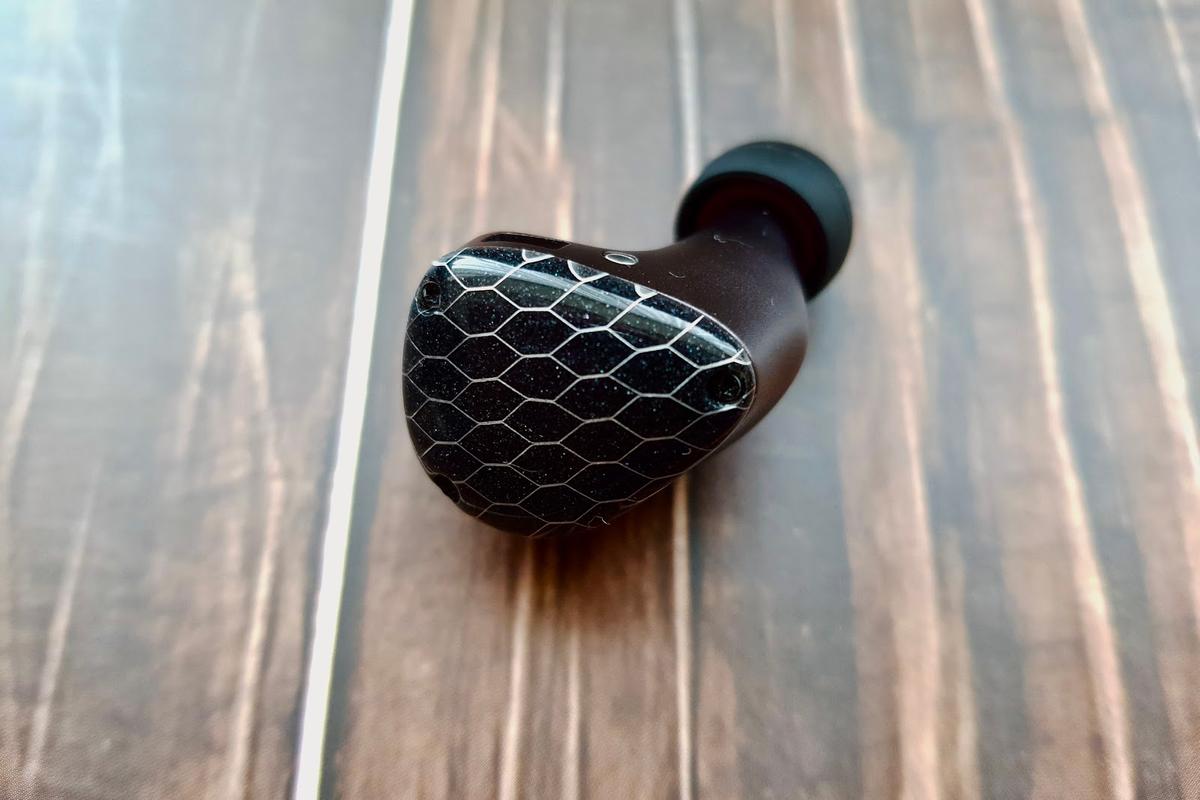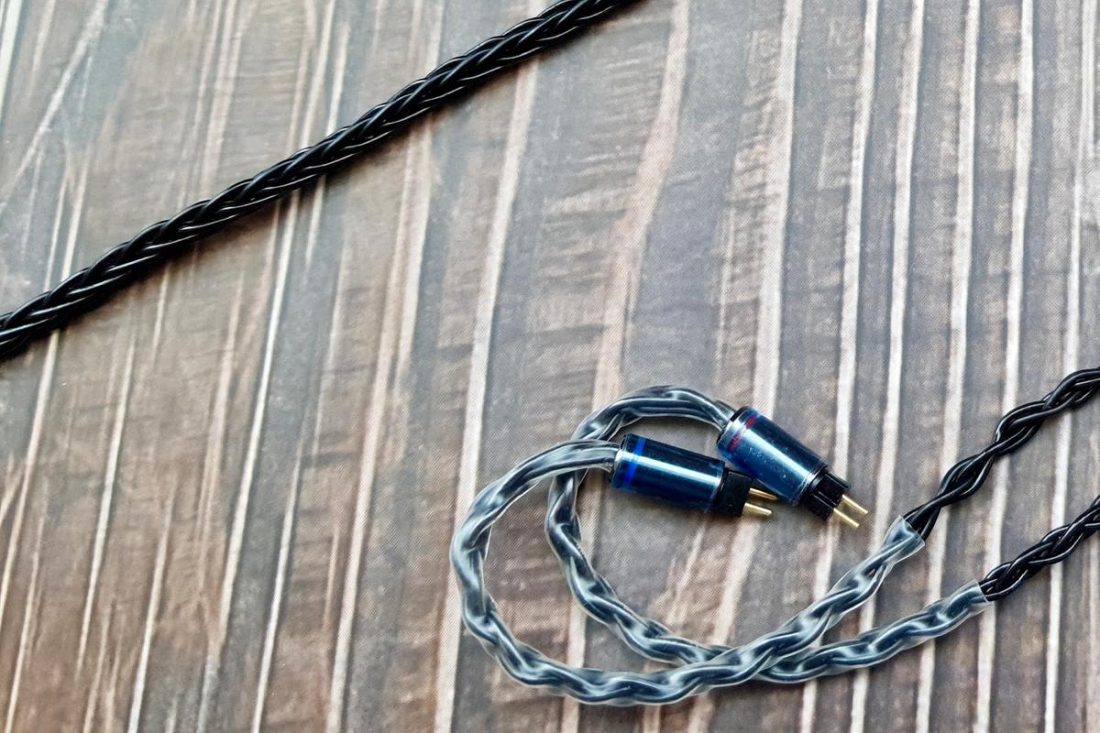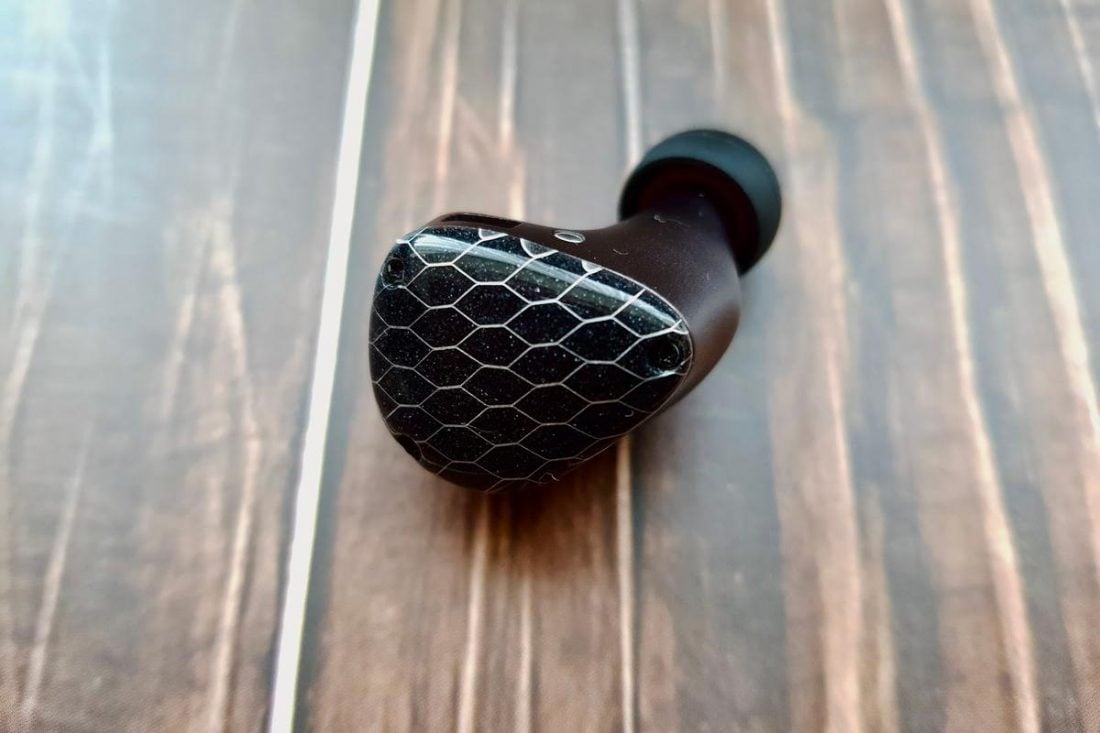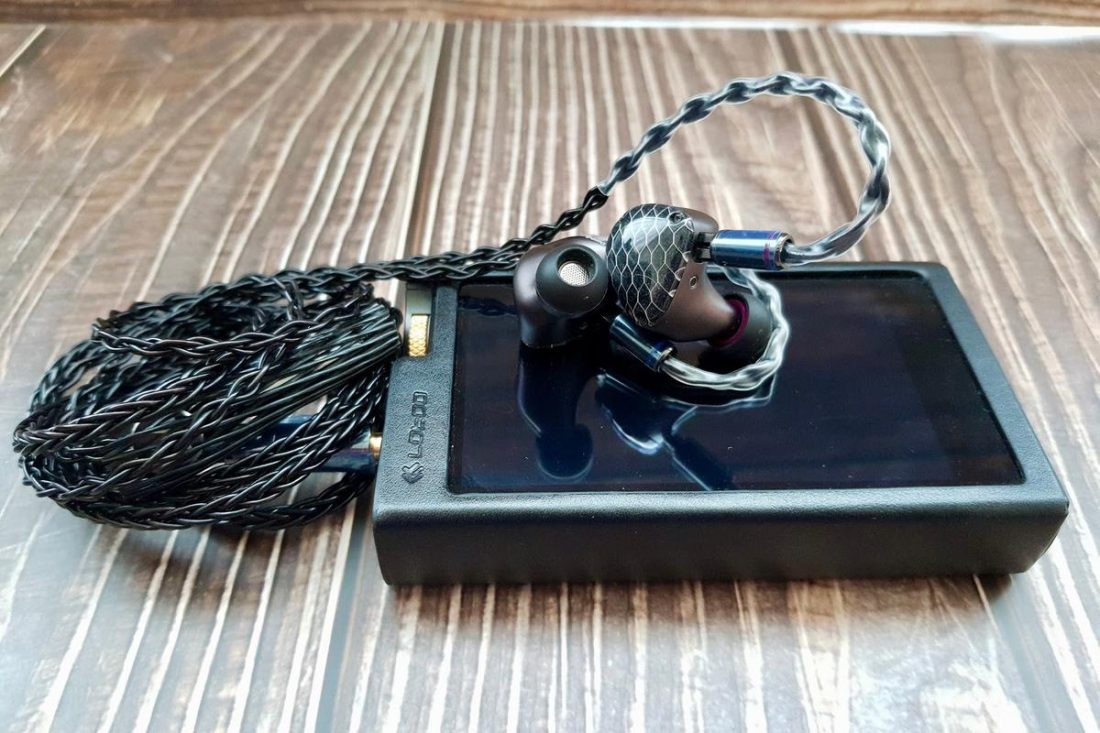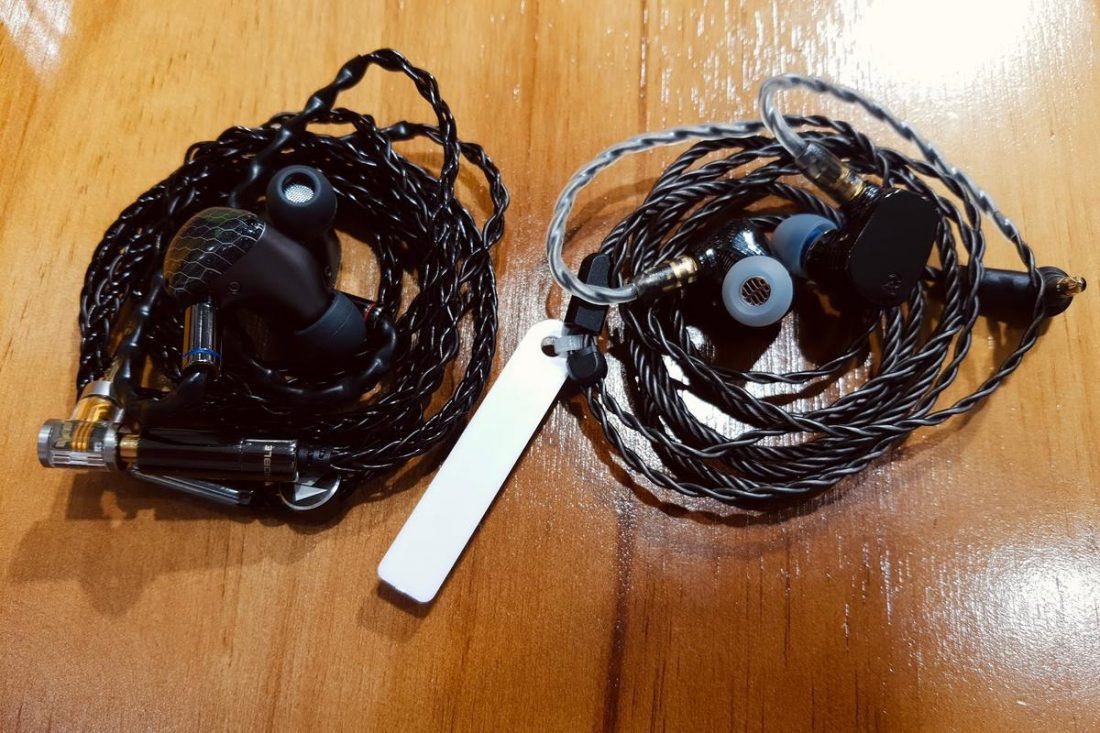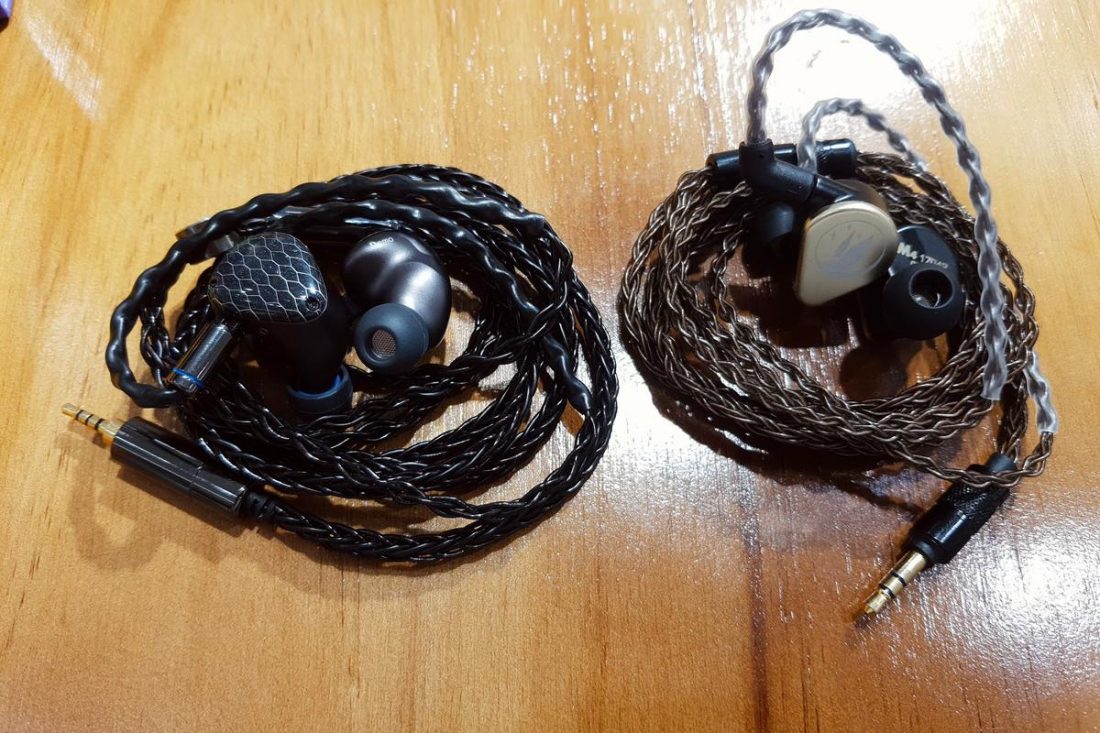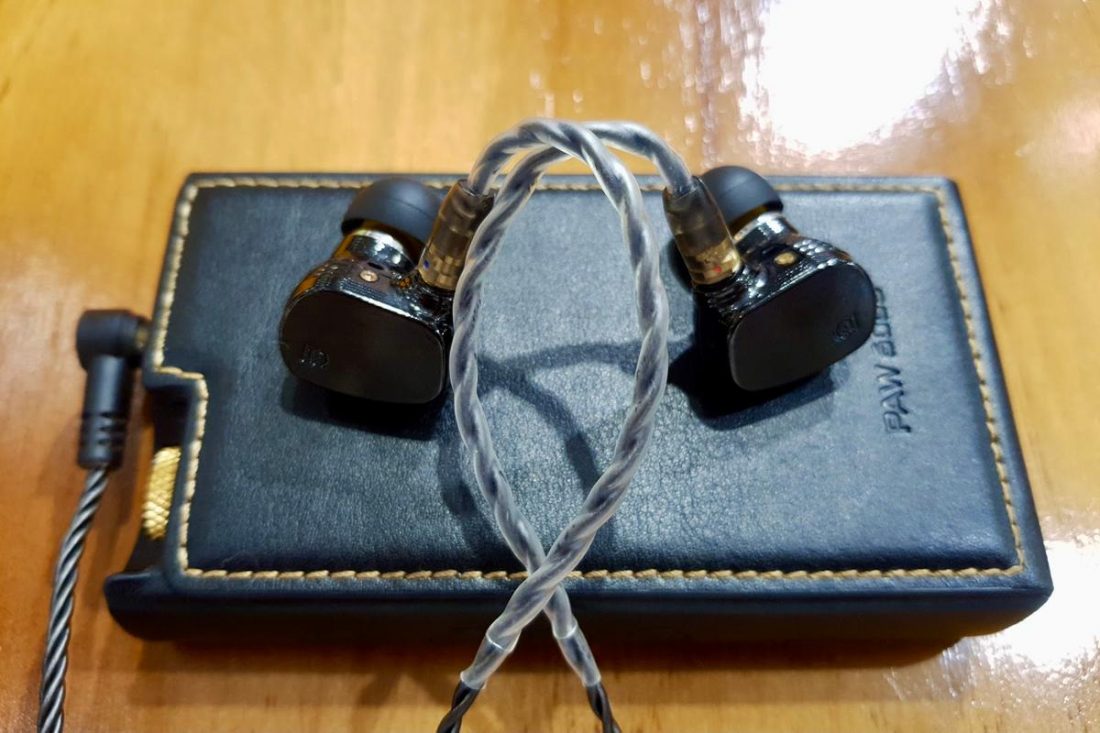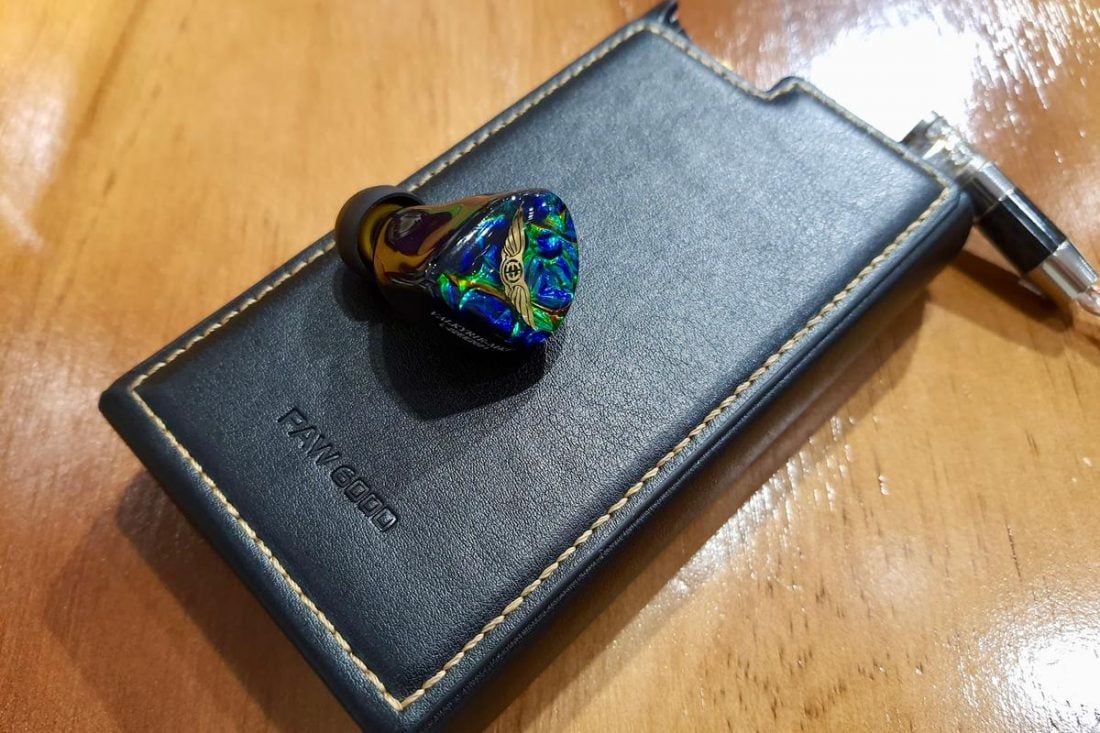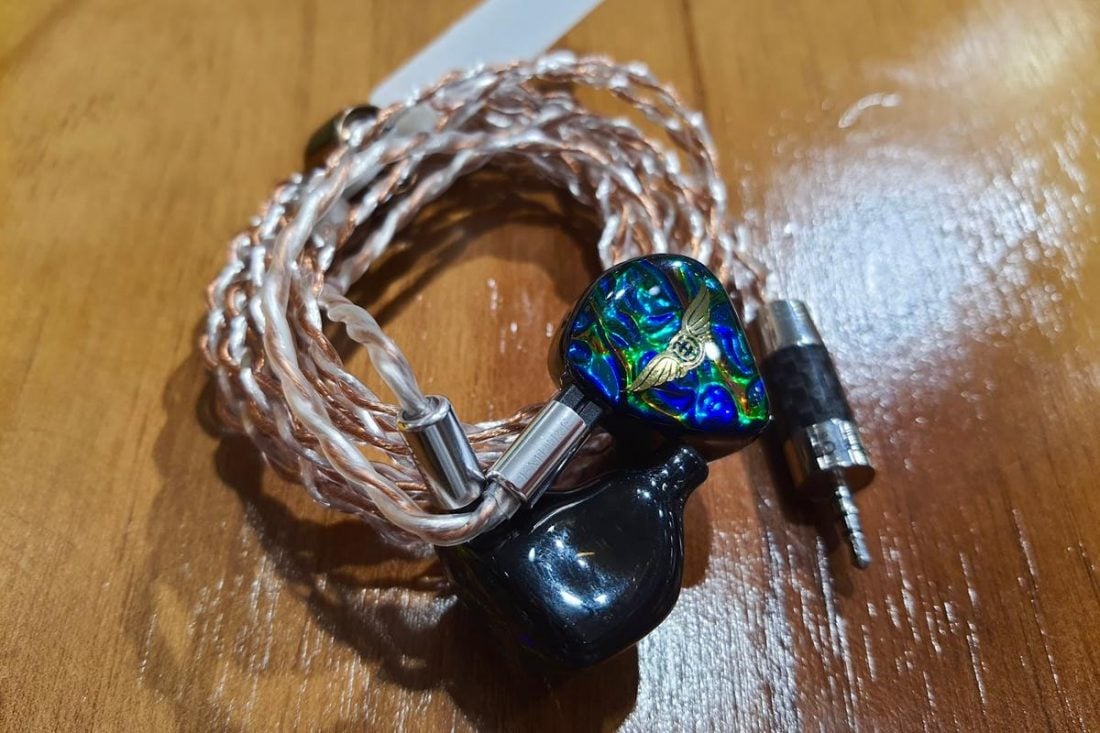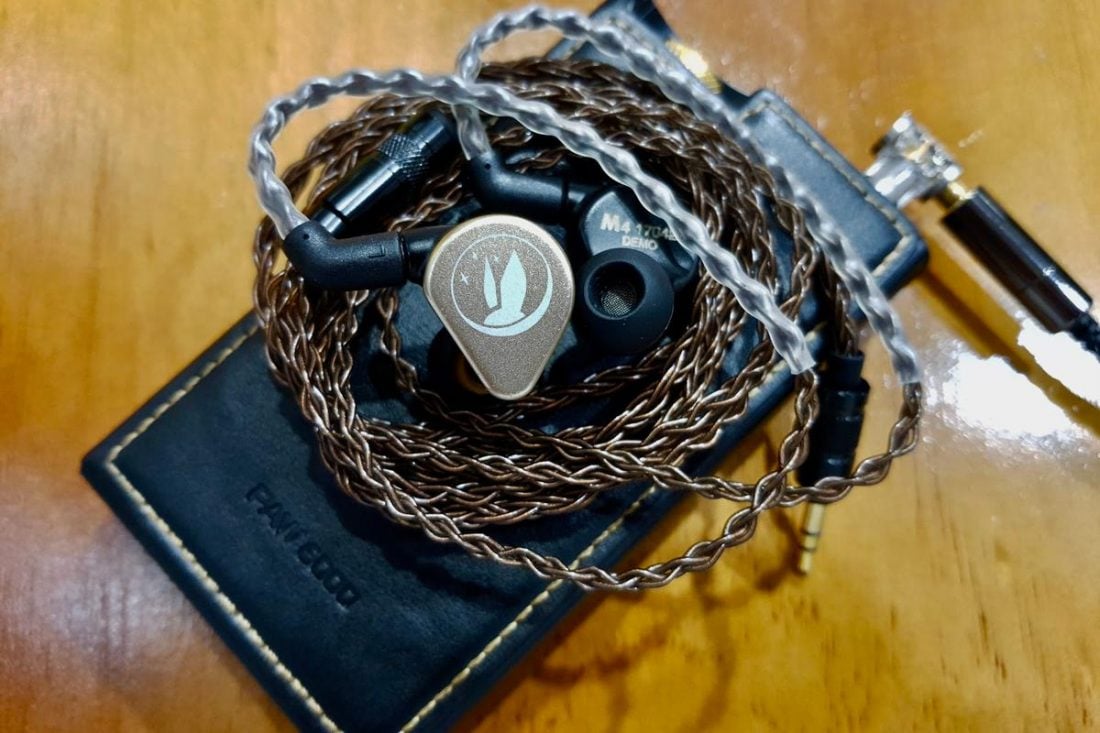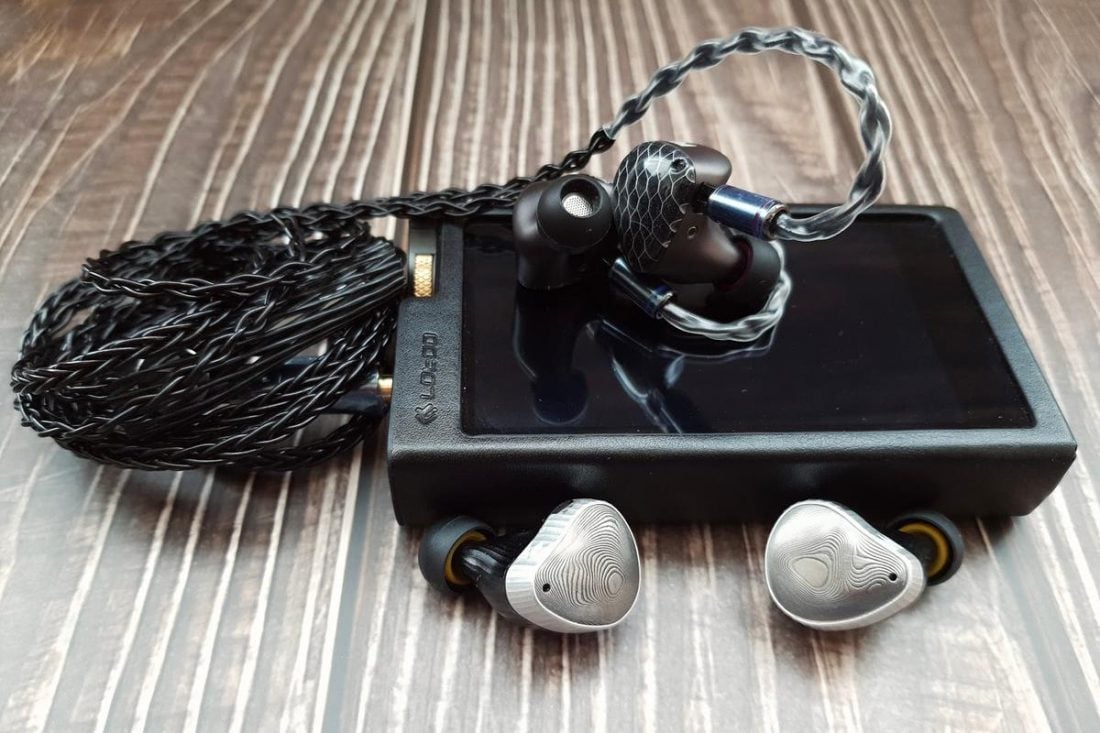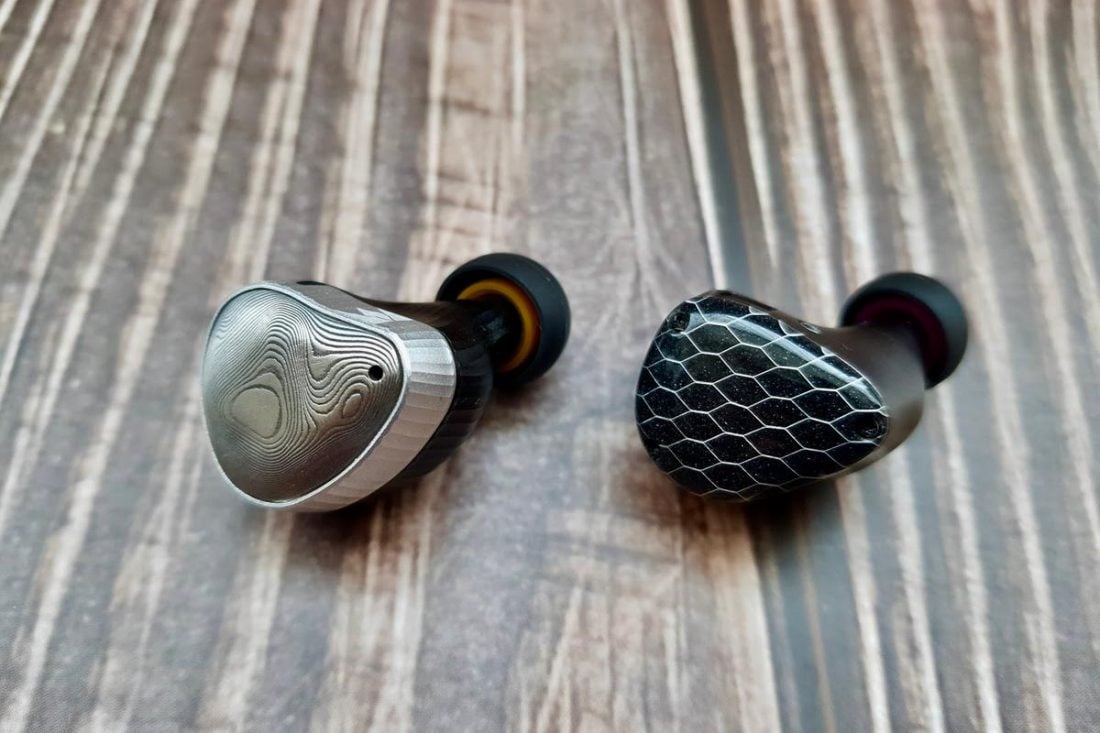The Noble Audio Zephyr are one of the latest products brought out by Noble Audio. They are hybrid, three-drivers per side IEMs. They are priced from $1450 for the universal form. Noble does offer them in a Prestige Universal form, which you can treat as a one-off edition with a unique design for each of the Prestige universals. The Prestige model is priced from $2300
Noble Audio
Noble Audio is one of the giants in the IEMs industry, and I believe every audiophile has heard of them in their audio journey. The Noble Kaiser K10 is often regarded as a game changer in the high-end portable audio world, and it is the product which helped Noble Audio gain recognition. Since then, the company has brought us many exciting products such as the Katana, the Kaiser Encore and the Sage. The Moulton brothers founded noble Audio, and John Moulton, often known as the Wizard, is known for creating custom IEMs with fabulous designs. His designs are not limited to just acrylic IEMs, but he often releases products utilizing other ingredients such as exotic woods, metal alloys, and carbon fiber. These products are known as the “Prestige” and you can see the amazing photos here.
Technical Specifications
Drivers: Single 10 mm dynamic driver + 2 custom-tuned Knowles balanced armature drivers (3-way crossover monitor) Impedance: N/A Sensitivity: N/A Cable: 8 core OCC copper cable of 3.5 mm jack to 2-pin
Design and Comfort
Unfortunately, all I received for this review were the earphones and the cable. As a result, I am unable to comment on the package and the accessories that come with the retail package. The thing I can comment on is the cable. From the Noble Audio website, the cable is described as: Now, I don’t want to trigger the debate of whether or not cables make a difference, but what I would like to say is that the cable is good looking and supple. Despite having 8 cores rather than the more common 4 cores, the cable is very soft and supple. It is lightweight, so wearing it is very comfortable and causes no problems for me. The black color also looks contemporary and low-key to me. The design of the actual earpiece is also astonishing. I absolutely love the honeycomb scheme in the faceplate with the glittering background. Again, it looks stylish and contemporary to me without being flashy and flamboyant. It matches the black color scheme of the cable as well. Regarding comfort, the Zephyr is in line with many other universal fit IEMs. That means the selection of eartips is very important to get the best sonic performance and comfort. Unfortunately, I did not receive any stock eartips. So, I ended up using JVC Spiral Dot ear tips which I found to be the most comfortable and to provide the maximum isolation. With the JVC tips, the Zephyr fit in my ears perfectly despite having a larger shell compared to my other IEMs. Even after wearing them for hours, they build up no hot spots or discomfort. The whole earpiece is also fairly lightweight despite the metal shell, improving the comfort of wearing them.
Sound Analysis
For this part, all sound analysis was completed paired with the Lotoo PAW 6000. Unfortunately, I could not analyze the Noble Zephyr’s sound with stock tips because I didn’t have access to those. Instead, all the impressions were done with the JVC tips. Usually, when I think of 3-driver hybrid IEMs, I expect a gentle u-shaped to a v-shaped sound signature from the earphones. No matter if they are budget, chi-fi IEMs or high-end monitors. (Think the Shuoer H27 that I reviewed previously, or the FIR Audio M3 or M4, or even the 64 Audio Tia Trio, just to name a few examples of hybrids which have this kind of sound signature.) However, the Noble Zephyr are rather special in my opinion. Unlike the previously mentioned IEMs, the Zephyr are fairly neutral to natural-sounding earphones, and they are closer to mid-centric rather than v-shaped. Does this mean that bass-heads will be satisfied by the bass quantity? Probably not. I will also say the same thing for treble-heads. The Zephyr likely needs more sparkle and agility in the upper region to satisfy those listeners. However, the overall timbre of the Zephyr is very natural and realistic and I think that the Noble earphones will be loved, or at least respected, by most audiophiles out there.
Bass
The sub-bass extension is good, but not impressive given the 10 mm dynamic driver. In the sub-bass region, the Zephyr are rather linear, and so the quantity of sub-bass will not satisfy bass-heads. The mid-bass, on the other hand, is elevated to provide some kick. There is certainly more mid-bass quantity compared to the lower bass. In terms of bass quality, there are no problems with the Zephyr. The decay is very natural, unlike some pure balanced armature IEMs like the older Noble models. The upper bass is slightly recessed. This gives a clean foundation to the Zephyr’s sound and makes it easy to appreciate their layering ability in the bass region. Also, because of the recessed upper bass, the bass region never sounds muddy, which enhances precision.
Midrange
Thanks to the slightly recessed upper bass, the midrange is never overpowered by the bass. Instead, the midrange and the vocals are always vibrant and emotional. The midrange is fairly dense and rich. That being said, the Zephyr is nowhere thick and slow sounding. They always remain crystal clear throughout the entire midrange, and the vocal clarity is one of the best I have ever heard in IEMs at this price range. For example, in one of my test songs, the infamous Hotel California by Eagles in their Hell Freezes Over album, the Zephyr is able to locate each singer and musical instrument, starting from the guitar intro at the beginning to the cheering of the audience at the end. The male vocals sound powerful and full while remaining clean, and almost the same can be said for the female vocals, which always sound crystal clear while remaining sweet and agile. They have the ability to allow the vocals to be vibrant and clean without being overly forward. The upper midrange, again, is clean and agile. However, it is ever so slightly recessed so that it is never shouty and harsh-sounding. Sibilance is nowhere found, which means all the “s” and “t” sounds are not sharp and aggressive. Instead, the upper midrange, such as violins and the upper keys in a piano, sound smooth and even.
Treble
Following the upper midrange, the treble is never shouty or harsh. The quantity of treble is enough to provide a sense of airiness and provide the impression of separation of the different layers of the music. And as we have previously established, it is possible that the quantity may not satisfy the treble-heads who love some extra juice and sparkle in the treble. Thanks to the recessed treble and sparkle quantity, the Zephyr are gentle and relaxing in the upper region. It is literally like a light breeze which is just enough to be fresh without being right in your face. The upper treble extension, like the sub bass, is good but not very impressive. That being said, the Zephyr still provide decent resolution throughout the whole spectrum, and you still get a good sense of agility.
Technicalities and Sensitivity
Unlike most other brands, Noble does not release specifications, such as the sensitivities or the impedances of their products. Instead, Noble only states that the product is “Sensitive enough for use with most smartphones as well as portable amps and daps.” As a result, the only way of finding out is through trying. When using the Zephyr with my Lotoo PAW 6000, the volume level sits comfortably at 32/100 in high gain, or 51/100 in low gain. This belongs to what I treat as the “optimum level”. From my experience, anything under this level will result in hissing in the background, and anything above this level will be too insensitive for pairing with entry-level dongles or smartphones. So, the Zephyr are free of these two problems, and there is no audible hissing even if I turn up the volume in high gain. The overall resolution and clarity are good in their price range, but not particularly outstanding. The vocal clarity, on the other hand, is very impressive. It has the ability to identify and locate the singers even in complex music. The Zephyr do not have a very wide soundstage, in fact, they are a pair of intimate sounding earphones. But depending on the genre you are listening to, this can either be positive or negative.
Comparisons
In this part, I will compare the Noble Zephyr with three other hybrid IEMs at around this price range, the Campfire Solaris 2020, the FIR Audio M4, and also the Empire Ears Valkyrie. To summarize the result, the Zephyr are very different from them, and it is good to see such refreshing IEMs.
Zephyr vs. Solaris 2020
The first thing I notice right away is the volume. The Zephyr are at 51~52/100 in low gain, and the Solaris 2020 are a lot more efficient, producing the same volume at just 44/100 in low gain in my Lotoo. In high gain, with the Solaris I detect a faint hissing, while the Noble are completely hiss-free. The Solaris has better sub-bass extension. There is more presence down low in the Solaris 2020 than the Zephyr, providing a more solid foundation. The Zephyr, on the other hand, has slightly more mid-bass presence than the Solaris. The Zephyr has a more natural transition from upper-bass to lower-mids than the Solaris 2020. The Solaris have a more forward midrange and vocals. The mids also sound bigger in the Solaris than the Zephyr. However, the Zephyr excels in vocal clarity and separation, not by much, but it is noticeable that the Zephyr have slightly better clarity in the midrange. Both have a slightly recessed upper-mid to the lower treble. The Zephyr have better coherence, and the transition from mids to highs is smoother and more natural on the Noble. In high frequencies, the Solaris 2020 have better extension and are more forward than the Zephyr. They are not as harsh and sharp as their predecessors but are still sharper than the Zephyr. The Zephyr are more relaxed and laid-back in the upper region, so they are more forgiving than the Solaris, but are also less agile and not as detailed. Also, as a result, the Zephyr are less airy than the Solaris. So, the Solaris have a considerably wider and taller soundstage. However, I find the Zephyr are slightly deeper and have slightly better layering ability than the Solaris 2020.
Zephyr vs. Empire Ears Valkyrie
To put it in simple words, the Valkyrie and the Zephyr are almost counterparts of each other. The Valkyrie are v-shaped, engaging, powerful sounding IEMs, while the Zephyr are balanced to mid-centric, relaxing and intimate IEMs. The Valkyrie utilizes the more exotic triple drivers “tribrid” setup, but even so, the volume settings of the two are identical paired with my Lotoo. Both sit comfortably at 51~52/100 and both are hiss-free. The dynamic driver in the Valkyrie is called the Weapon IX subwoofer for a good reason. The Valkyrie have better sub bass extension than the Zephyr, and the slam and the power in the Zephyr is no match to the Valkyrie. The Valkyrie have more presence in terms of bass but still retain a high level of texture. The Zephyr, however, have a much smoother transition from bass to mids, allowing for a more coherent sound. As mentioned, the Valkyrie are a more V-shaped sounding IEMs, compared to the rather mid-centric Zephyr. So, the Zephyr have a more forward vocal presence and midrange while the Valkyrie always take one or two steps back. The Zephyr have better vocal clarity, especially the lower midrange because of their more recessed mid to upper bass response. Here the Zephyr is richer and denser than the Valkyrie, which does not have as vibrant a midrange. Up in the treble, the electrostatic driver in the Valkyrie definitely shines over the Zephyr. The treble in the Valkyrie has a much stronger extension without sounding harsh or forced. The Zephyr have a more relaxed upper region, which may be good or bad news for some. As a result, the Zephyr are smoother and more easy-going, while the Valkyrie are more exciting and engaging.
Zephyr vs. Fir M4
The Fir M4 are a pair of earphones that I like a lot. Like the Zephyr, they also have a more traditional hybrid setup in contrast to the “tribrid” in the Valkyrie. In terms of sound, there are some similarities and differences between the M4 and the Zephyr. The M4 also has an impressive midrange but achieves it with a different approach. The M4 are more linear to a gentle u-shaped, and the Zephyr are mid-centric. The M4, again, has a better extension in the sub-bass region. They have more sub-bass presence than the Zephyr. But unlike the Valkyrie, the M4 have a quicker decay so they sound more natural and less bloomy. The texture and layering in the bass is better in the M4 than the Zephyr. Both of them have a similar quantity for the mid-bass, but the M4 is slightly warmer and organic. In the upper bass region, the Zephyr is slightly recessed compared to the M4. As a result of that, the transition from bass to mids is cleaner in the Zephyr and slightly more coherent, whereas the bass in the M4 may sometimes cross into the midrange. Both the M4 and the Zephyr have a rich and organic midrange. However, while I consider both the M4 and the Zephyr as linear and neutral-natural sounding, the M4 lean closer to a U-shaped sound signature, whereas the Zephyr are closer to a mic-centric sound. As a result, the vocals in the Zephyr are more vibrant than in the M4. In the upper midrange region, that is the “s” and the “t” sound region, the Zephyr are more relaxed and laid-back than the M4. The M4 have a brighter upper midrange and a lower treble. This gives the M4 more sparkle and power in the upper midrange with instruments like violins. However, this also means that some people may find the M4 harsh and aggressive in that region. Up in the treble, the M4 once again have a better treble extension than the Zephyr. The treble in the M4 is quicker and has more sparkles than the Zephyr. This creates an airier sound to the M4. So, the M4 have a bigger soundstage than the Zephyr, and the M4 are also more detailed than the Zephyr.
Zephyr vs. Sultan
I know, I know. This isn’t a fair contest at all. The Sultan are nearly double the price of the Zephyr. However, because I was able to borrow both of them at the same time, why not also include this comparison as well? Right? The Sultan are the flagship model of Noble Audio right now, while the Zephyr are the third model in Noble’s line up, below the Sultan and the Khan. The Sultan are slightly more sensitive than the Zephyr, so while the Zephyr requires 51/100 in low gain, the Sultan only needs 47/100 to be just right. Both of the Noble are not sensitive to hissing, and they both have a black background. The Sultan has deeper digging bass. They have better extension than the Zephyr. However, throughout the whole bass spectrum, the Zephyr have more bass quantity than the Sultan. The Sultan are less physical in the bass kicks than the Zephyr. Both Nobles have a recessed upper bass for better clarity. Despite this, the Sultan are much cleaner and have a better resolution deep down while maintaining the organic feeling bass of a dynamic driver. In the midrange, both the Sultan and the Zephyr have a similar placement for the lower midrange. However, they do this differently. The Zephyr are warmer in the midrange than the Sultan, which have an even higher midrange clarity and resolution than the Zephyr. The Sultan have a very impressive treble extension. They are not as aggressive as the treble in its predecessor, the Khan. However, compared to the Zephyr, some may find the lower treble of the Sultan a bit sharp because it is more forward than that in the Zephyr. The Zephyr can’t match the agility and the details up top of the Sultan, and the staging in the Sultan is airier than the Zephyr because of that. The Sultan have a much larger soundstage than the Zephyr in all dimensions. The Zephyr have an intimate feeling to their sound, but the Sultan are able to stretch the sound outwards. The layering ability of the Zephyr is good, but the Sultan are simply astonishing in this area. But after all, given the price difference, what do you expect, right?
Where to Buy
You can buy the Noble Zephyr here from Audio 46 or here from the official Noble website for the Prestige models.
Verdict
The Zephyr are rather special and refreshing IEMs, in my opinion. They are natural and balanced sounding. Despite not having the best extension and resolution, their outstanding midrange clarity and impressive coherence allow them to be versatile for a wide range of genres. Noble always comes up with impressive designs, and this is no exception. The Zephyr are good looking even in the standard edition. After you select the right choice of eartips, they are also comfortable to wear. Well done Noble, the Zephyr really are good.
